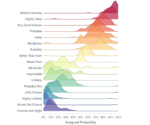In today’s world, every business buzzword seems to center around Tableau or other visualization tools. Companies often rush towards flashy dashboards and visualization software without first addressing the fundamental foundation—robust data manipulation through SQL. Surprisingly, many organizations overlook the fact that visualizations alone won’t guarantee effective decision-making. What truly drives analytical intelligence lies in your ability to retrieve, filter, aggregate, and transform your data structure meaningfully. SQL—or Structured Query Language—offers unmatched agility, accuracy, and efficiency for interacting and communicating with data at scale. In fact, Tableau itself relies heavily upon the backbone SQL provides. Before investing heavily in Tableau licenses or ramping up Tableau training, you should first consider mastering SQL. Here’s why embracing SQL proficiency is the key to unlocking true data-driven success.
SQL Offers the Essential Foundation for Data-Driven Success
Companies that dive into Tableau dashboards without deep SQL fundamentals can face painful setbacks. While Tableau buoyantly claims ease-of-use and quick insight generation, relying solely on visualizations leads businesses toward drawing conclusions from incomplete or flawed data. SQL empowers analysts to clean, extract, reshape, and compile data directly at the source. Unlike visualization tools such as Tableau, proficiency in SQL allows professionals to truly control, understand, validate, and trust their dataset before visualizing it (create and structure data tables in SQL). SQL lets you build a strong pipeline where you manipulate data, resolve duplicates, handle missing values, and aggregate accurately, a level of control Tableau alone can’t offer.
The mastery of SQL means teams spend less time wrestling with data inaccuracies or format inconsistencies in Tableau. Rather, they’re equipped to lay down a reliable data foundation by using SQL statements that retrieve specific data columns, filter based on complex conditions, summarize vast records into actionable intelligence, or gratefully insert new data (learn about inserting rows of data with SQL). With SQL as your analytical cornerstone, Tableau can later serve as a simplified, user-friendly interface where executives confidently visualize data that’s been thoroughly cleaned and enriched.

SQL Empowers Scalability and Flexibility Tableau Can’t Match
Data environments are not static—they grow, evolve, and diversify rapidly. While Tableau is excellent for visualizing and summarizing smaller-scale data, its rigid interfaces can become cumbersome when you require frequent recalibrations, complex JOIN operations, or deep historical archival. Your analytics architecture must accommodate constantly changing business needs, integrating new data from myriad sources like social media platforms (data warehousing for social media data in platforms like Google BigQuery) or even LinkedIn engagements (sending LinkedIn data to Google Big Query using Node.js).
SQL skills transform your team from mere visualization users into agile data innovators. While Tableau might struggle to accommodate many pivots, dynamic filters, or seamless data integration, SQL handles any complexity efficiently. Advanced SQL users deploy powerful queries, stored procedures, and automation workflows, reshaping and pivoting countless datasets instantly—capabilities Tableau inherently lacks. Skilled SQL analysts don’t need to wait days for data engineers to adjust Tableau’s underlying structure. Instead, they swiftly adapt their databases to new analytical insights. For instance, efficient inventory demand forecasting or financial modeling scenarios often demand extensive SQL work, demonstrating SQL’s inherent flexibility at scale.
True Analytical Empowerment Starts with SQL Literacy
Empowering your workforce with SQL literacy revamps organizations culturally, operationally, and competitively. While Tableau may create colorful visuals that excite stakeholders, SQL forms the backbone that ensures decisions are truth-driven, reliable, and transparent. Indeed, SQL literacy allows teams to communicate complex business requirements effectively, fine-tune parameters dynamically, and govern data quality proactively. These capabilities transcend what Tableau visually conveys; SQL provides clear visibility into how visualizations are derived, ensuring trustworthiness and clarity.
Moreover, mastering SQL enhances productivity across various functional domains. Your teams learn essential competencies crucial for strategic task accomplishment, such as efficiently retrieving information related to customer segmentation, logistics optimization… With increased transparency from well-constructed SQL queries, analysts quickly detect inconsistencies, troubleshoot issues, streamline database adjustments, and rapidly react during product launches or new market penetrations. Tableau visuals alone might help explain visually, but SQL ensures the underlying story is accurate, robust, and dependable. Encouraging widespread SQL fluency energizes your organizational intelligence far beyond Tableau dashboarding limitations.
SQL Knowledge Makes Tableau Even Better
Ironically, the message isn’t “ditch Tableau.” Instead, recognize Tableau needs SQL to truly shine. By leveraging robust SQL skills alongside Tableau capabilities—crafting executive dashboards that genuinely guide decision-making—analysts dramatically improve visualization accuracy, timeliness, and depth. SQL-trained team members massively simplify and optimize Tableau’s calculations and data sources, resulting in faster interactions, reduced dashboard-rendering latencies, more reliable metrics, and richer analytics user experiences.
Organizations often discover that professional investment in SQL training yields substantial dividends through better Tableau performance, lower development costs, and reduced data error rates. Importantly, pairing SQL skills with Tableau visualizations elevates employee skills significantly beyond just drag-and-drop graphical abilities. Analytical talent cultivated by institutions—like The University of Texas at Austin’s training programs—starts with SQL as a core competency. SQL-savvy Tableau developers become powerful allies in building comprehensive, user-friendly analytics interfaces that executive decision-makers truly appreciate.
Trying Tableau without strong SQL proficiency risks misinformation, confusion, delayed insights, and potential reputational damage. Instead, turn visualization software usage into strategic success by first mastering SQL. Only then does Tableau visualization genuinely empower comprehensive, trustworthy, intuitive data exploration.
Invest in SQL Training First, Visualization Second
Rather than jumping straight to Tableau, companies serious about valuable, agile data innovation should prioritize SQL skills training. These SQL foundations enable advanced analytical explorations, speedy data transformations, and comprehensive data warehouse capabilities impossible through visualization tools alone—providing the analytics backbone every data-driven enterprise truly requires.
Consider this your strategic shift towards reliable analytics innovation. Don’t focus exclusively on purchasing expensive visualization software licenses hoping they’ll instantly transform your analytics practices. Understand that without first mastering SQL’s power to shape, correct, analyze, and aggregate complex datasets, visualization software (even as robust as Tableau) can quickly become burdensome, unreliable—another costly solution which fails to deliver on expectations.
Starting from SQL literacy ensures your analysts smoothly and confidently transition towards effective visualization techniques like Tableau dashboards and analytics stories. Invest rightly—build your organization’s critical SQL competencies first. After establishing true analytical acumen at the foundational SQL level, visualization software investments effortlessly pay off.
If you’re ready to truly harness SQL’s transformative power—enhancing Tableau utilization, strengthening analytics confidence, or optimizing data innovation solutions—explore our data visualization consulting services: Data Visualization Consulting Services, Austin Texas.



















